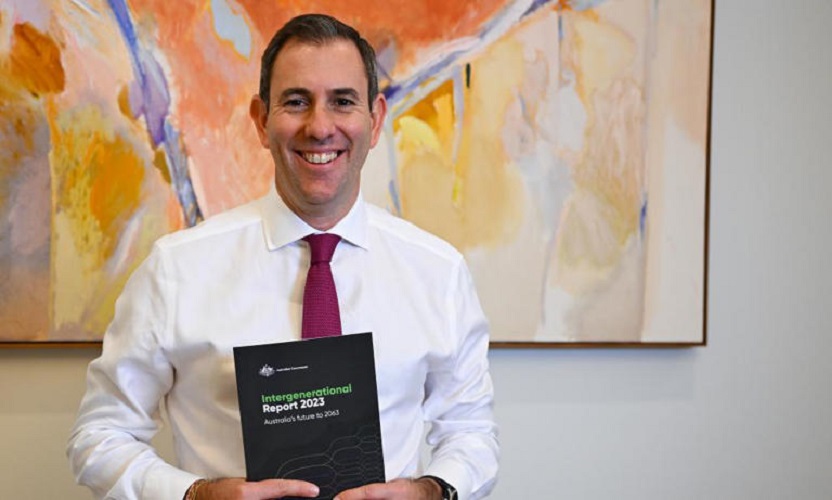Australia’s Growth to Slow as Workforce Participation Falls over Coming Decades
The recently released Intergenerational Report (IGR) forecasts a decline in Australia’s growth rate, dropping from an average of 3.1% to 2.2% in the coming years. This decrease is attributed to lower workforce participation, slower productivity, and population growth, which will impact the country’s economic well-being.
Treasurer Jim Chalmers, in presenting the report, emphasizes the government’s optimism in investing in renewable energy and other measures to lift productivity and help Australia “own the future.” He also highlights the critical importance of addressing climate change as a global environmental and economic imperative, given the potential significant impacts if global heating exceeds 2°C above pre-industrial levels.
The IGR points out that $225 billion of investment will be needed to decarbonize heavy industries and transition to a clean energy system. Chalmers believes this investment will unlock opportunities for Australia in the net-zero economy, where clean, renewable power will create comparative advantages in new industries.
The report paints a positive vision of Australians living longer and healthier lives, with renewable energy and technology transformation at the core, along with care and compassion.
By 2062-63, the IGR projects that the Australian economy will grow two and a half times larger, with incomes 50% higher in real terms. However, once population increases are accounted for, the average annual growth rate of income per person is projected to be 1%, compared to the 2.1% average over the past four decades.
The report highlights that, similar to other advanced economies, Australia’s economic growth will slow due to projected lower population growth, reduced participation due to aging, and an assumption of slower long-term productivity growth.
While Australia currently experiences near-record-high labor force participation, driven by increased female participation, the report predicts an overall decline from 66.6% in 2022-23 to 63.8% in 2062-63. The gender participation gap is also expected to narrow, with men’s participation only seven percentage points higher than women by 2062-63.
Population growth is projected to slow to 1.1% compared to the 1.4% average of the previous 40 years, with an estimated total population of 40.5 million in 2062-63. Australians are expected to live longer and have fewer children, leading to an aging population.
Chalmers acknowledges that an aging population will present challenges for the budget and economic growth due to a smaller share of working-age individuals, which will put pressure on the tax base.
The report also foresees a 3.8% increase in total government spending as a percentage of GDP over the next 40 years, with aging accounting for two-fifths of this increase. This rise in spending, combined with the fastest-growing areas of federal spending (health, aged care, NDIS, defense, and interest payments), is expected to contribute to a larger budget deficit and increased debt.
However, the IGR indicates that gross government debt is projected to decline to 22.5% of GDP in 2048-49 before rising to 32.1% by 2062-63. It attributes this improvement to a faster-than-expected recovery from the Covid-19 pandemic and disciplined fiscal policies aimed at budget repair.
In response to the IGR, Shadow Treasurer Angus Taylor highlights the challenges faced by households and small businesses in the present, including high power prices, interest rate rises, and a decline in labor productivity. He suggests that immediate concerns take precedence over long-term projections.
Chalmers acknowledges the difficulty faced by Australians and the need to address immediate cost-of-living pressures without adding to inflation. However, he emphasizes the importance of not losing sight of the future and the need for leaders to focus on multiple horizons and opportunities simultaneously.
Chalmers concludes that the IGR’s assumption of 1.2% productivity growth is more realistic than the previous report’s 1.5% assumption. Although real GDP projections have decreased compared to previous years, he remains confident in Australia’s potential for growth and resilience in the face of upcoming challenges.













































